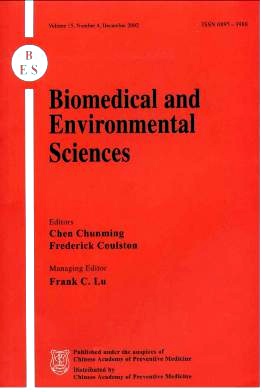Studies on Hypokalemia Induced by Trimethyltin Chloride
-
Key words:
- Trimethyltin chloride /
- Hypokalemia /
- Animal model /
- Mechanism
Abstract: To determine the possible relationship between plasma potassium concentration and severity of acute trimethyltin chloride (TMT) poisoning and to assess the mechanism of TMT induced hypokalemia. Methods SD rats were treated with various dosages of TMT (ip). All the indices were measured and analysed for determing their possible relations with plasma K+. Results With increase of dosage, the plasma K+ level dropped rapidly, and deaths appeared more quickly. The LDs0 of TMT (ip) was 14.7 mg/kgbw. In the low dosage group (10 mg/kgbw), the plasma K+ level dropped slowly with the lowest dosage on day 6 (4.85 mmol/L). It rose again on day 11 (5.06 mmol/L), and recoverd on day 28. The poisoning signs corresponded with decline of the span of K+ level. The plasma Na+ level dropped half an hour after TMT treatment, but recovered 24 h later. In the high dosage group (46.4 mg/kgbw), the levels of plasma K+ and Na+ fell rapidly within half an hour (P<0.05), the intracellular potassium concentration of RBC did not decrerase obviously (P>0.05), the activities of Na+-K+-ATPase and Mg2+-ATPase in RBC membrane were depressed remarkably (P<0.01, P<0.05, respectively), the plasma aldosterone concentrations rose as high as tenfold (P<0.01), the arterial blood pH fell from 7.434 to 7.258 (P<0.01),pCO2 was raised from 29.62 to 45.33 mmHg (P<0.01). In the 24 h urine test, when rats were treated with TMT (21.5 mg/kgbw, ip), urine volume, urinary potassium, sodium and chloride increased significantly in comparison with those in the controls (P<0.01). Conclusion TMT could induce hypokalemia in SD rats. The available evidence suggests that TMT can induce acute renal leakage of potassium. At the same time, a significant rise of plasma aldosterone may play an important role in promoting potassium leakage from kidney to result in severe hypokalemia with inhaling acid-base abnormalities produced, which aggravate the poisoning symptoms. In the end the rats would die of respiratory failure.
| Citation: | TANG XIAO-JIANG, LAI GUAN-CHAO, HUANG Jian-xun, LI LAI-YU, DENG YING-YU, YUE Fei, ZHANG QING. Studies on Hypokalemia Induced by Trimethyltin Chloride[J]. Biomedical and Environmental Sciences, 2002, 15(1): 16-24. |







 Quick Links
Quick Links
 DownLoad:
DownLoad: